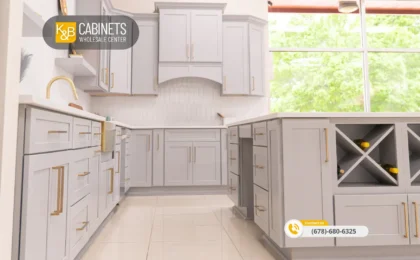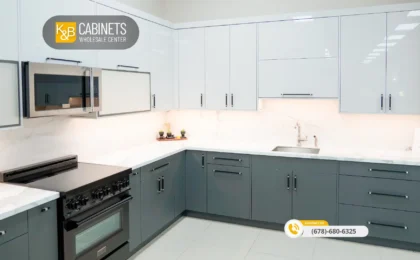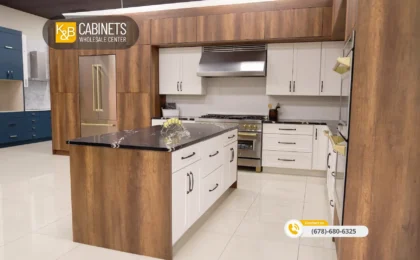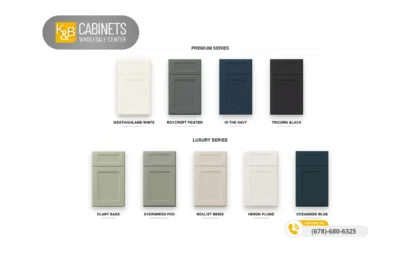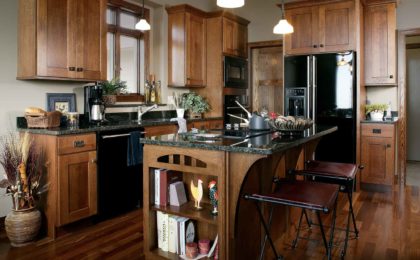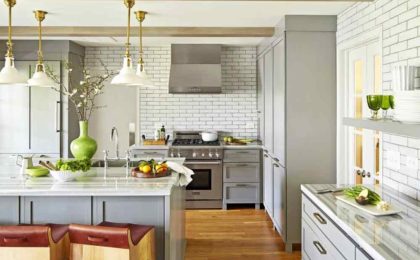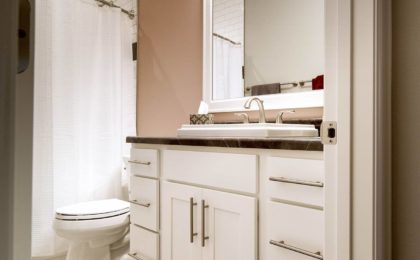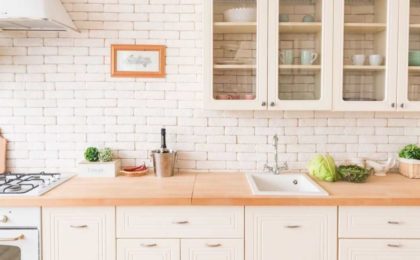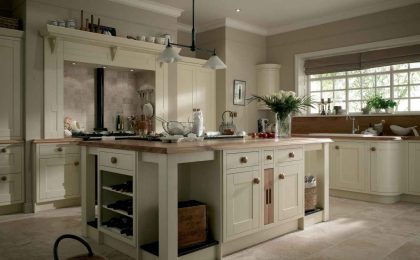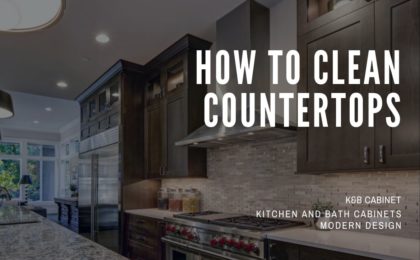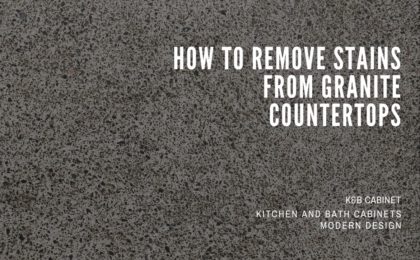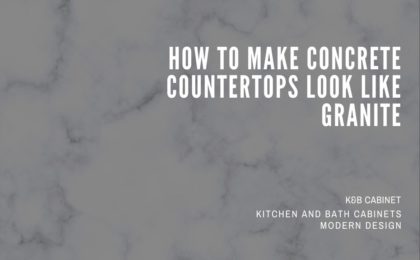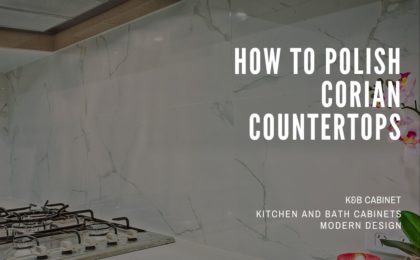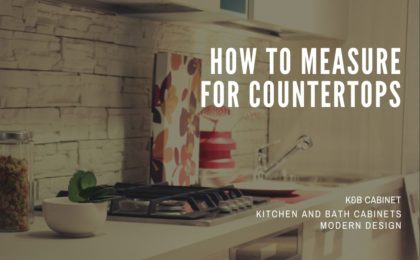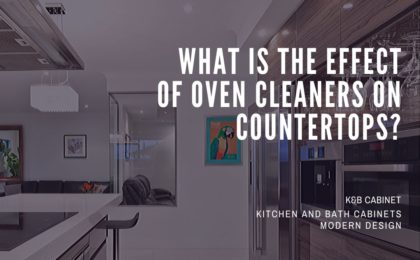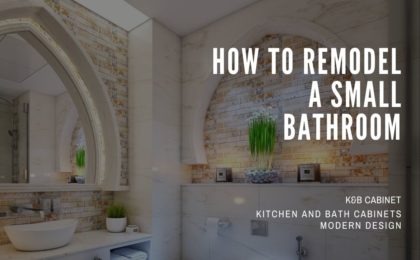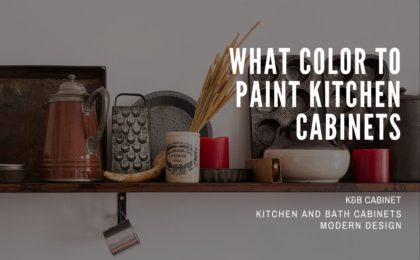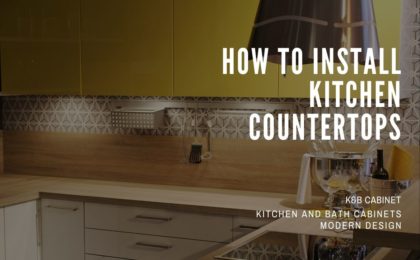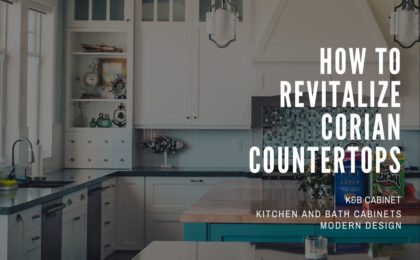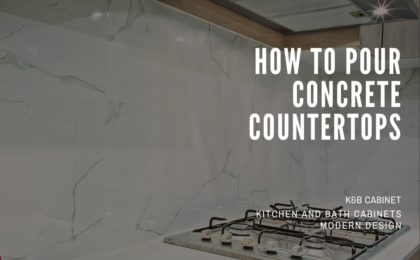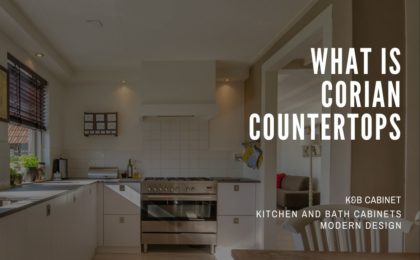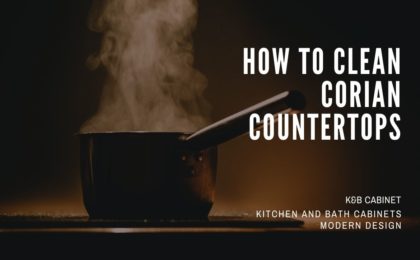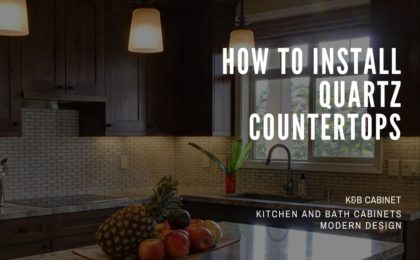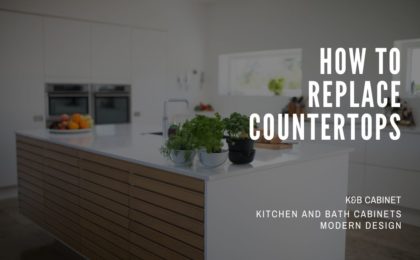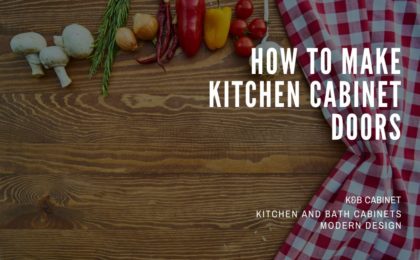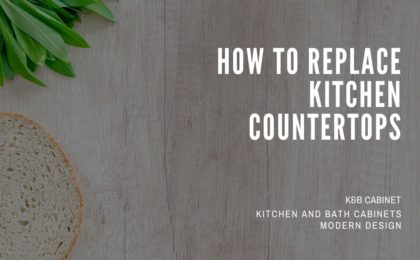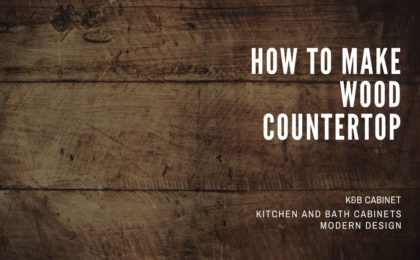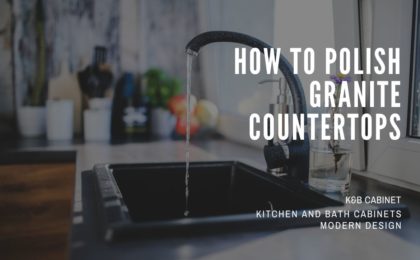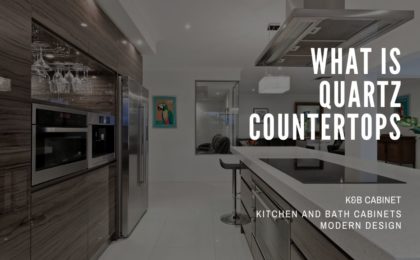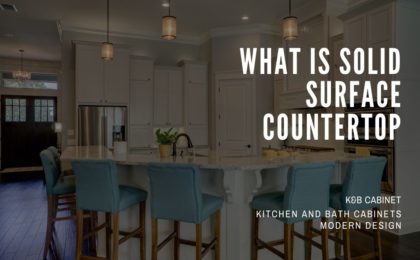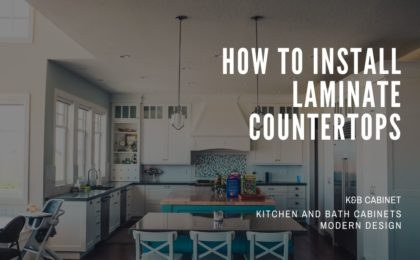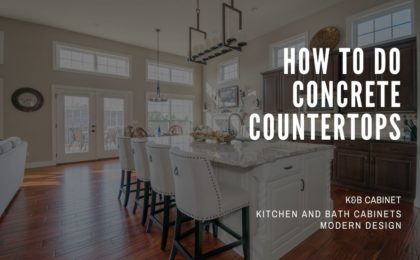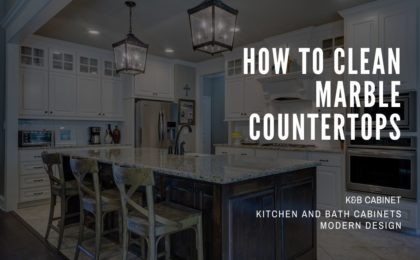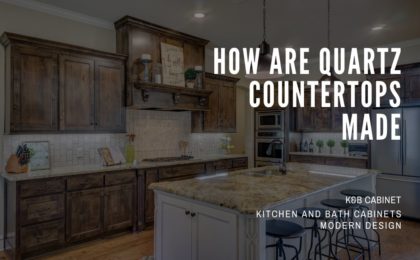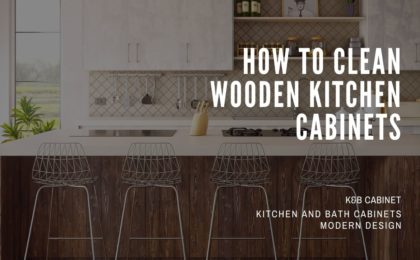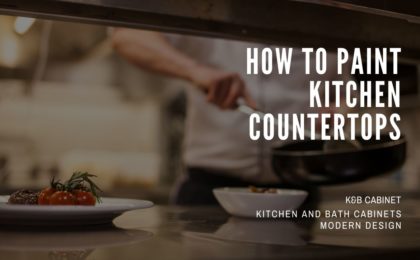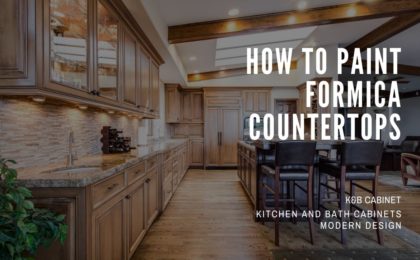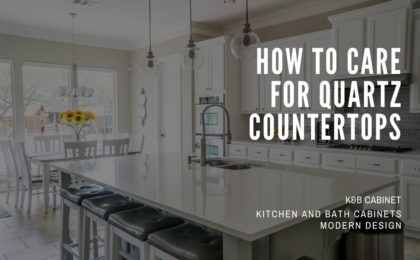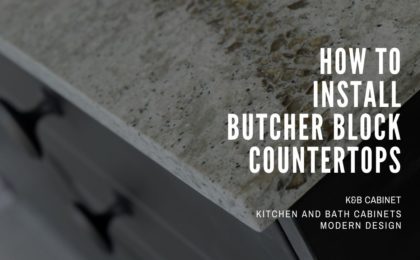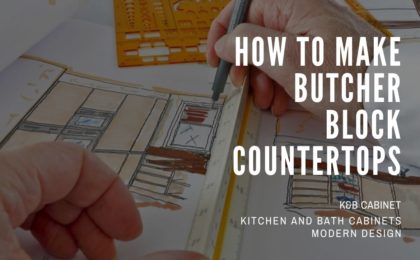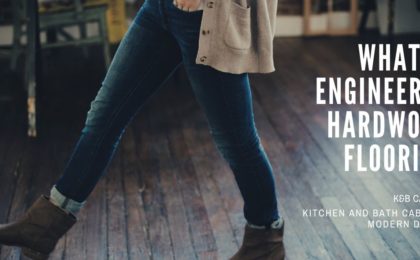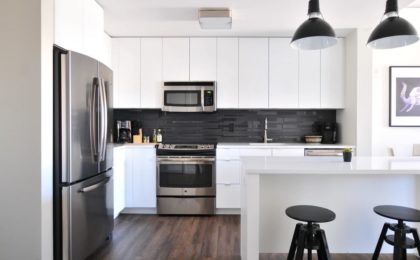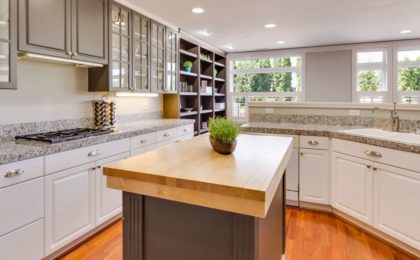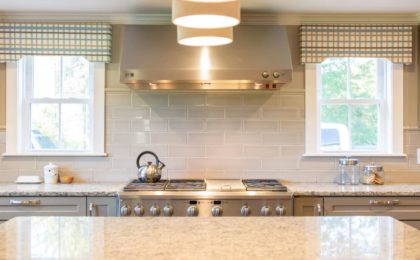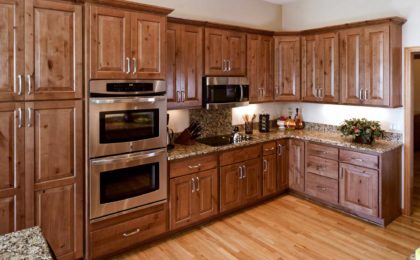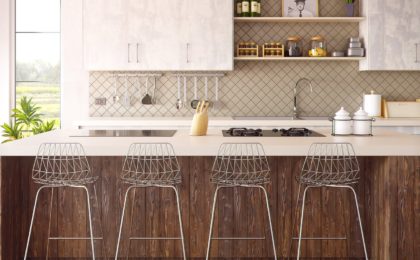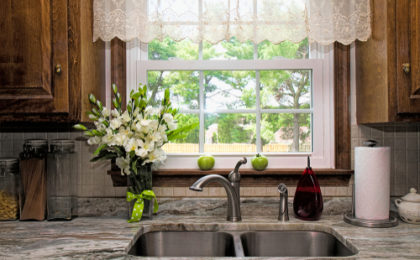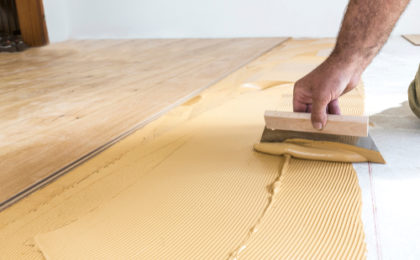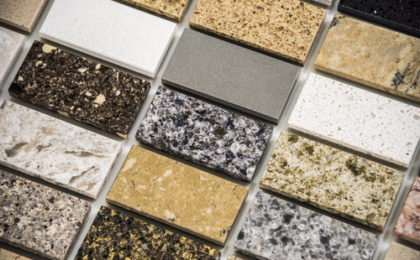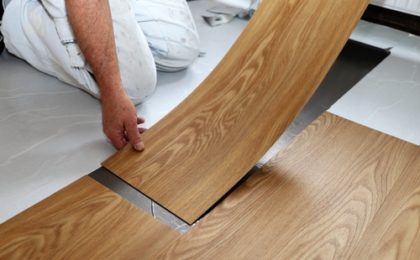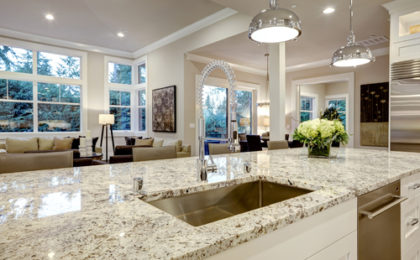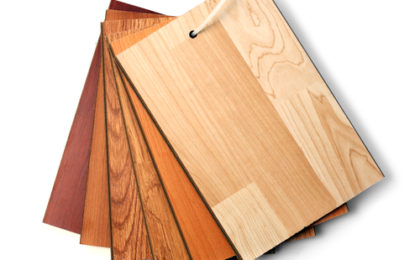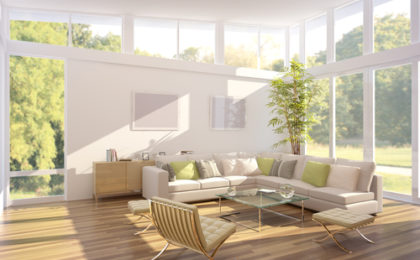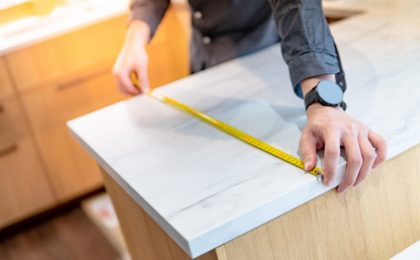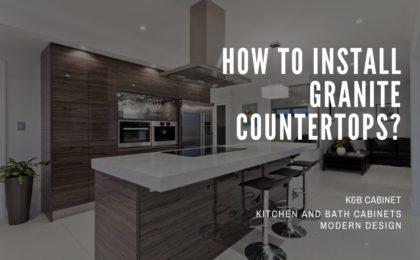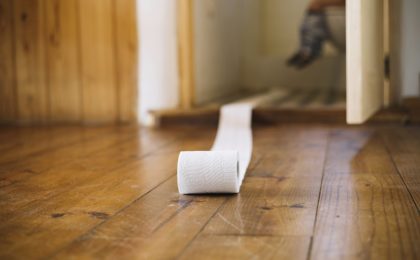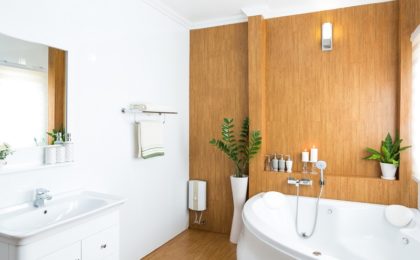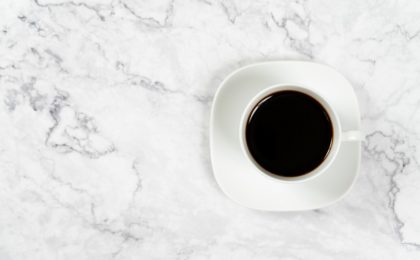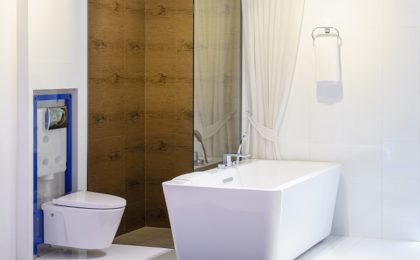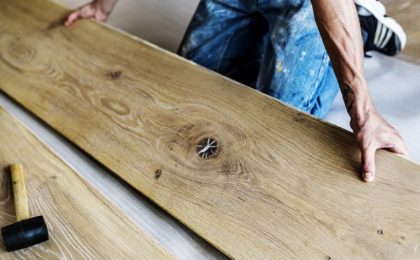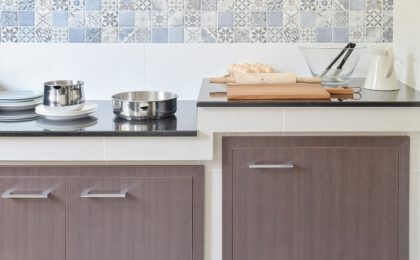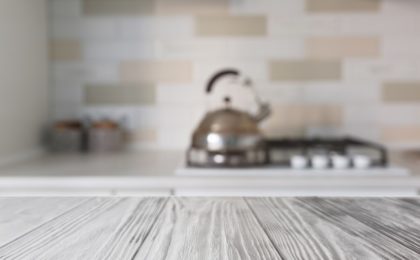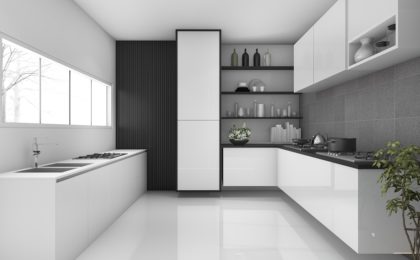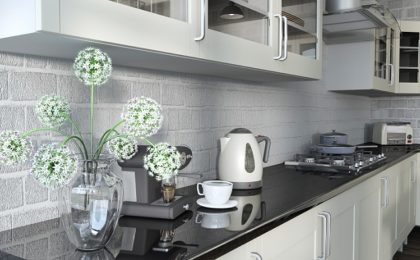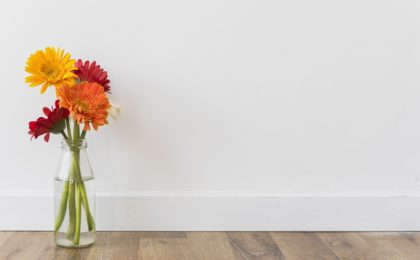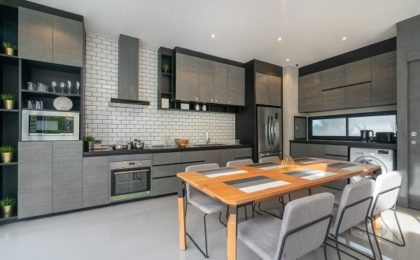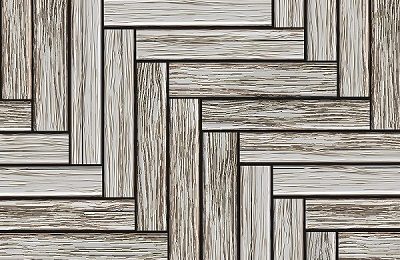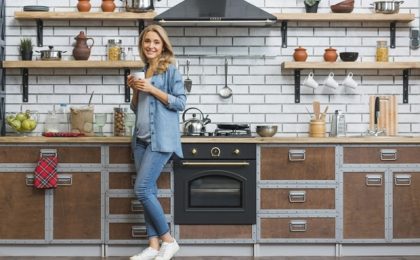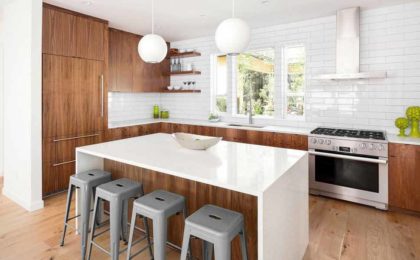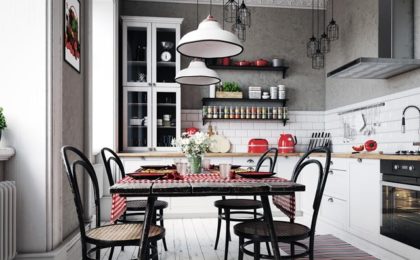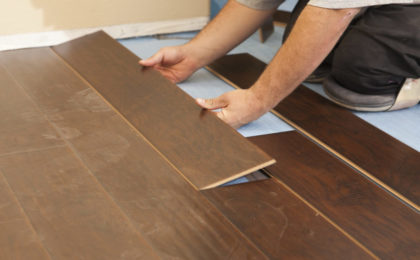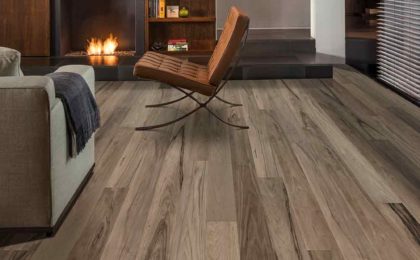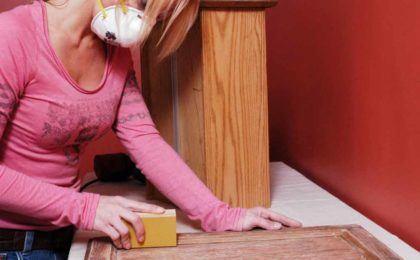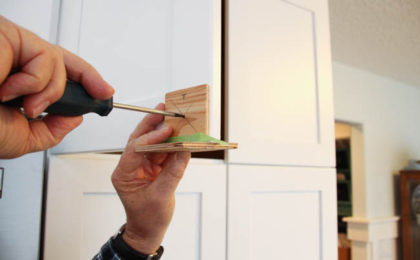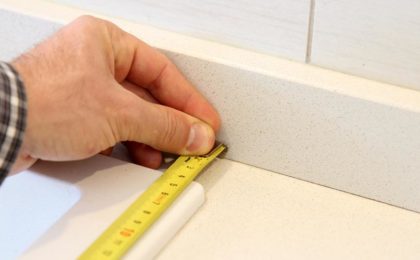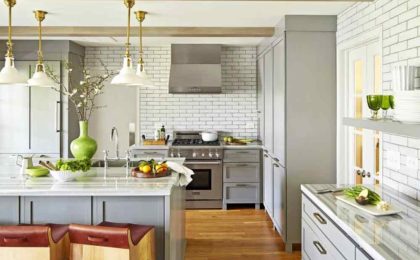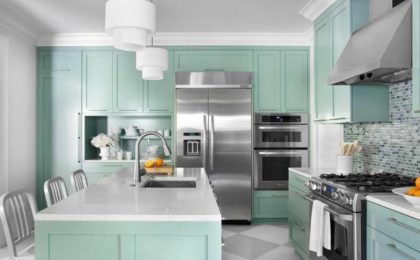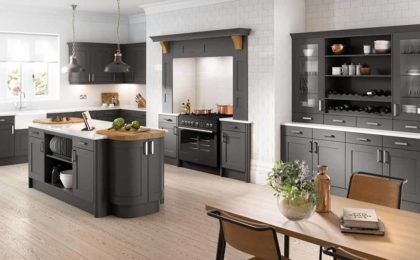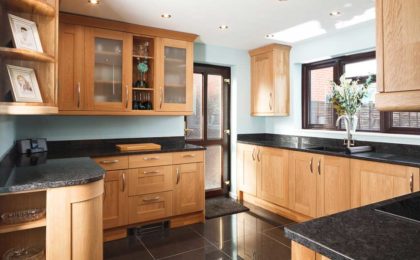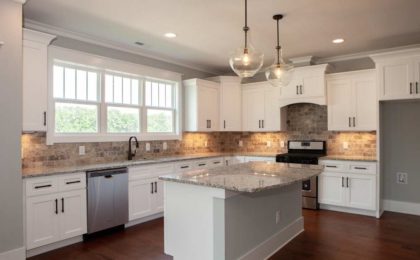Transform Cabinets with Expert Custom Finishing Tips
Kitchen and bathroom cabinets serve as the foundation of these essential spaces, yet many homeowners overlook the transformative power of professional finishing techniques. Whether working with new wholesale cabinets or refreshing existing ones, the right custom finishing approach can elevate any space from ordinary to extraordinary.
This comprehensive guide explores expert techniques that deliver professional-quality results, helping homeowners achieve the perfect balance of beauty, durability, and functionality in their cabinet projects.
Key Takeaways for Transforming Cabinets with Expert Custom Finishing Tips
- Preparation Is Crucial: Properly cleaning, sanding, and repairing cabinet surfaces ensures a flawless and durable finish. The quality of the prep work directly affects the final result.
- Custom Finishes Add Unique Value: Choosing a custom finish allows homeowners to achieve personalized colors, textures, and effects that mass-produced cabinets can’t match, enhancing both style and property value.
- Protect and Extend Cabinet Life: Quality finishing not only makes cabinets beautiful but also creates a protective barrier against moisture, heat, and everyday wear, which is significant in kitchens and bathrooms.
- The Right Finish for the Right Job: Paints, stains, glazes, and lacquers each offer different benefits. Selecting the right product for your cabinets’ material and your desired look is essential.
- Trend-Savvy Choices: Popular cabinet finish trends include warm neutrals, two-tone effects, textured finishes, and deep, bold colors with matte or low-sheen surfaces.
- Application Method Matters: Spraying delivers flawless, professional-looking surfaces, while high-quality brushes and foam rollers offer control and versatility for DIY applications. Apply thin, even coats for best results.
- Sealants Ensure Long-Term Beauty: A protective topcoat (like polyurethane or conversion varnish) locks in color and resists stains, scratches, and fading, reducing future maintenance needs.
- Designer Details Make a Difference: Techniques such as glazing, distressing, and antiquing add depth and character, while two-tone finishes and contemporary hardware create high-end looks affordably.
- Avoid Common Pitfalls: Rushed preparation, poor environmental control, and piling on product to “fix” mistakes often lead to inferior results. Address any issues by correcting the source, not just covering them up.
- Professional Results Are Achievable: With patience, careful attention to detail, and quality materials, homeowners can transform cabinets—making them the focal point of any kitchen or bathroom and increasing overall home appeal.
Article Contents
Why Custom Finishing Can Transform Your Cabinets
The Impact of Cabinet Finishing on Home Design
Custom finishing serves as the defining element that determines how cabinets integrate with overall home design. The finish affects not only the visual appeal but also how light interacts with surfaces, creating depth and character throughout the space. A well-executed cabinet finish can make budget-friendly RTA cabinets appear as premium custom pieces, while poor finishing can diminish even the highest-quality solid wood cabinets.
The psychological impact of cabinet finishing extends beyond mere aesthetics. Rooms with professionally finished cabinets feel more cohesive and intentionally designed, contributing to a sense of comfort and satisfaction for homeowners and visitors alike. The finish acts as a unifying element that ties together various design components, from countertops to backsplashes, creating harmony within the space.

Benefits of Choosing a Custom Finish
Custom cabinet finishing offers unparalleled flexibility in achieving specific design goals. Unlike mass-produced finishes, custom applications allow for precise color matching, unique textures, and personalized effects that reflect individual style preferences. This approach enables homeowners to create truly distinctive spaces that stand apart from standard offerings.
The investment in professional cabinet finishing typically yields significant returns in both satisfaction and property value. Custom finishes can transform basic kitchen cabinets into focal points that rival expensive built-in units. Additionally, the ability to specify precisely the desired sheen level, color depth, and protective qualities ensures that the finished product meets specific functional requirements while maintaining aesthetic appeal.
How Custom Finishing Enhances Cabinet Lifespan
Quality cabinet finishing serves as the primary defense against daily wear, moisture, heat, and chemical exposure. Properly applied finishes create protective barriers that prevent wood damage, warping, and deterioration over time. This protection is particularly crucial for bathroom cabinets that face constant humidity exposure and kitchen cabinets subjected to cooking vapors and frequent cleaning.
The durability benefits of professional finishing extend to maintenance requirements as well. Well-finished surfaces resist staining, scratching, and fading, maintaining their appearance with minimal upkeep. This longevity makes custom finishing a cost-effective investment that reduces the need for frequent refinishing or replacement, particularly important for wholesale cabinet purchases where maximizing value is essential.
Tip #1: Prep Like a Pro — Surface Preparation Essentials
Cleaning and Sanding Techniques
Proper surface preparation forms the foundation of any successful cabinet refinishing project. Begin by thoroughly degreasing all surfaces using a high-quality degreasing agent specifically designed for wood cabinets. Pay particular attention to areas around handles and frequently touched surfaces where oils and residues accumulate most heavily.
The sanding process requires systematic progression through different grits, typically starting with 120-grit sandpaper to remove existing finishes and smooth major imperfections. Progress to 150-grit, then 220-grit for the final smoothing. Always sand with the grain direction on solid wood surfaces, using consistent pressure to avoid creating uneven areas that will show through the final finish.
For laminate cabinets or previously painted surfaces, light scuffing with 220-grit sandpaper provides adequate adhesion without removing too much material. The goal is to create a uniform surface texture that promotes proper adhesion of primers and topcoats. Vacuum all dust between sanding stages and wipe surfaces with tack cloths to ensure complete cleanliness.
Repairing Dents and Imperfections Before Finishing
Surface imperfections become magnified under professional finishes, making thorough repair work essential for quality results. Minor dents in solid wood cabinets often respond well to steam treatment, where a damp cloth and household iron can raise compressed wood fibers back to surface level.
For deeper gouges and holes, use high-quality wood filler that matches the wood species characteristics. Apply filler slightly proud of the surface, allow complete curing, then sand flush using progressively finer grits. Test the filler’s acceptance of stain on hidden areas before proceeding, as some fillers may absorb stain differently than surrounding wood.
Loose joints and gaps require attention before finishing begins. Use appropriate wood glue for structural repairs, clamping until fully cured. Fill nail holes and screw indentations with matching wood putty, ensuring complete adhesion and proper curing time. These preparatory steps ensure that the custom finish will highlight the cabinet’s beauty rather than its flaws.
Tip #2: Choose the Right Type of Finish for Your Cabinets
Paint, Stain, Glaze, Lacquer — What’s Best for You?
Cabinet paint offers the most dramatic transformation potential, completely changing color while providing excellent durability and easy maintenance. Modern cabinet paints feature advanced formulations that resist chips, scratches, and yellowing while delivering smooth, professional-looking surfaces. Choose high-quality alkyd or hybrid formulations for maximum durability in high-use areas.
Wood stain enhances natural grain patterns while providing color variation options from light honey tones to rich espresso shades. Penetrating stains work best on solid wood cabinets, offering deep color saturation that won’t chip or peel like surface coatings. Gel stains provide more control and even coverage, beneficial for vertical surfaces and complex cabinet profiles.
Lacquer finishes deliver the highest level of durability and professional appearance but require specialized application equipment and techniques. These finishes cure to tough, smooth surfaces that resist damage while maintaining clarity that showcases wood grain beautifully. Glaze applications add depth and character, particularly effective for creating aged or antiqued appearances on traditional style cabinets.
Trending Custom Finish Styles for Kitchens
Contemporary kitchen cabinet trends emphasize natural materials and sophisticated color palettes. Warm neutrals, including mushroom, sage, and soft grays, continue gaining popularity, often combined with natural wood tones for two-tone effects. These colors complement modern design aesthetics while providing timeless appeal that won’t quickly become dated.
Textured finishes are experiencing renewed interest, with techniques like cerusing, wire brushing, and subtle distressing adding tactile interest to cabinet doors. These treatments work particularly well on oak cabinets and other open-grain species, emphasizing natural wood characteristics while adding visual depth.
Black and deep navy finishes remain strong choices for creating dramatic focal points, particularly effective on kitchen islands or accent pieces. When balanced with lighter perimeter cabinets, these bold colors create sophisticated contrast without overwhelming the space. Matte and low-sheen finishes complement these darker colors, reducing glare while maintaining rich color depth.

Tip #3: Apply with Precision — Tools and Techniques
Brush vs. Spray: Which Delivers Better Results?
Spray finishing delivers the smoothest, most professional results when properly executed. Airless sprayers provide excellent coverage for cabinet painting projects, eliminating brush marks while achieving consistent film thickness. However, spray application requires proper ventilation, extensive masking, and experience to avoid runs, overspray, and uneven coverage.
High-quality brushes remain the preferred choice for many DIY cabinet finishing projects due to their controllability and lower equipment requirements. Natural bristle brushes work best with oil-based products, while synthetic brushes perform better with water-based finishes. Choose brushes with adequate thickness and density to hold sufficient material while maintaining smooth application characteristics.
Foam rollers offer a middle ground between brushes and sprayers, providing smoother coverage than brushes with less equipment complexity than spray systems. High-density foam rollers work particularly well for cabinet painting on flat surfaces, while brush work may still be necessary for detailed areas and inside corners.
Avoiding Common Application Mistakes
Temperature and humidity control significantly impact finish quality and curing characteristics. Apply finishes only when ambient conditions fall within manufacturer specifications, typically between 65-75°F with relative humidity below 50%. High humidity can cause blushing in lacquer finishes, while extreme temperatures affect flow and leveling properties.
Maintain consistent wet edges during application to avoid lap marks and color variations. Work systematically from one area to the next without stopping mid-surface, blending each section into the previous while the material remains workable. This technique becomes particularly important with fast-drying finishes that begin setting before application completion.
Avoid the temptation to apply thick coats to reduce the number of applications required. Multiple thin coats provide better durability, smoother appearance, and fewer application problems than single thick applications. Allow adequate drying time between coats as specified by manufacturer instructions, testing with a gentle touch rather than relying solely on time estimates.
Tip #4: Seal It Right — Protecting Your Finish Long-Term
Choosing the Right Sealant or Topcoat
Polyurethane topcoats provide excellent protection for kitchen cabinets exposed to moisture, heat, and frequent cleaning. Water-based polyurethanes offer low odor and quick drying times while maintaining good durability characteristics. Oil-based versions provide slightly better moisture resistance and depth of appearance but require longer cure times and more ventilation during application.
Conversion varnish represents the premium choice for professional cabinet finishing, offering superior chemical resistance and durability compared to standard topcoats. These catalyzed finishes cure to tough surfaces that resist household chemicals, making them ideal for bathroom cabinets and kitchen applications where cleaning products are frequently used.
For natural wood finishes, penetrating sealers followed by appropriate topcoats provide the best combination of protection and appearance. These systems allow some wood movement while maintaining protective qualities, particularly important for solid wood cabinets that experience seasonal expansion and contraction.
How to Maintain a Professional Look Over Time
Establish regular cleaning routines using appropriate products that won’t damage cabinet finishes. Mild soap solutions work well for most finishes, while harsh chemicals and abrasive cleaners should be avoided. Immediately wipe up spills and moisture to prevent staining or damage to the protective coating.
Periodic inspection of cabinet hardware and adjustment of hinges helps prevent unnecessary wear on finished surfaces. Loose hinges can cause doors to rub against frames, creating wear patterns that detract from the overall appearance. Properly adjusted hardware ensures smooth operation while protecting the finish investment.
Consider applying paste wax or appropriate polish products annually to maintain luster and provide additional protection. These treatments help resist fingerprints and minor scratches while enhancing the depth and richness of the underlying finish. Always test any maintenance products on inconspicuous areas before general application.

Tip #5: Add Designer Touches with Decorative Techniques
Glazing, Distressing, and Antiquing Effects
Glazing techniques add depth and character to cabinet finishes by emphasizing architectural details and creating visual interest. Apply glaze over base coats using rags, brushes, or specialized tools, working it into recessed areas while wiping high points clean. This technique works particularly well on raised panel doors and decorative moldings where natural shadows enhance the effect.
Distressing methods create aged appearances that suggest years of gentle wear and character development. Light sanding of edges and high-wear areas, combined with selective stain application, produces convincing patina effects. Focus distressing on areas where natural wear would occur, such as door edges, drawer fronts around handles, and cabinet bases near the floor.
Antiquing glazes provide controlled aging effects without the unpredictability of natural distressing. These specialized products flow into details and grain patterns, creating subtle shadows and depth variation. Layer multiple glaze colors for complex effects, always working with adequate open time to achieve desired blending and uniformity.
Creating a High-End Look with Minimal Cost
Two-tone finishing techniques can transform basic wholesale cabinets into custom-appearing installations. Consider darker colors for base cabinets with lighter tones for upper units, or accent selected cabinets with contrasting finishes. This approach adds visual interest while allowing budget flexibility in material selection.
Decorative hardware upgrades can dramatically impact the perceived quality of cabinet installations. Choose hardware styles that complement the finish style and overall design aesthetic. Quality hinges and drawer slides also contribute to the premium feel by ensuring smooth, quiet operation that suggests careful attention to detail.
Crown molding and trim additions create custom-built appearances when properly finished to match cabinet surfaces. These architectural elements add height and sophistication while concealing gaps between cabinets and ceilings. Paint-grade materials work well for painted finishes, while wood species matching becomes important for stained applications.
| Finish Type | Best For | Key Benefit | Maintenance Level | Style Vibe |
|---|---|---|---|---|
| Paint | Modern, bold updates, versatile styles | Unlimited color options, covers imperfections | Moderate (dependent on sheen and color) | Classic/Contemporary |
| Wood Stain | Natural wood lovers, solid wood cabinets | Enhances natural grain, warm finishes | Low to moderate | Traditional/Timeless |
| Glaze | Decorative accents, raised detail doors | Depth, highlights architectural features | Moderate | Vintage/Traditional |
| Lacquer | Sleek or high-gloss finishes, modern kitchens | Durable, very smooth finish, high sheen | High (careful upkeep required) | Modern/Contemporary |
| Polyurethane Topcoat | High-traffic, wet areas (kitchens, baths) | Superior protection from moisture, stains, wear | Low to moderate | Versatile (Pairs with most finishes) |
Pro Advice from K&B Cabinets Finishing Specialists
Mistakes to Avoid During Custom Cabinet Finishing
Rushing the preparation phase represents the most common cause of finish failure in cabinet projects. Inadequate surface preparation, incomplete cleaning, or insufficient drying time between steps inevitably leads to adhesion problems, uneven appearance, or premature failure. Invest appropriate time in preparation work, as it directly determines the quality and longevity of the final result.
Ignoring environmental conditions during application and curing periods frequently causes finish problems that become apparent only after completion. Temperature extremes, high humidity, or inadequate ventilation can cause blushing, slow cure times, or contamination issues. Monitor conditions carefully and delay application when conditions fall outside recommended parameters.
Attempting to correct problems by applying additional coats without addressing underlying causes typically compounds rather than solves issues. Strip and restart problematic areas rather than building up multiple correction attempts that often result in texture problems, color variations, or adhesion failure over time.
Recommended Products and Tools from Our Experts
Professional-grade primers designed specifically for cabinet applications provide superior adhesion and blocking properties compared to general-purpose products. Choose primers formulated for the specific substrate and topcoat combination being used, whether working with laminate, solid wood, or previously finished surfaces.
High-quality synthetic brushes in multiple sizes ensure proper application tools for all areas of cabinet work. Invest in brushes designed for the specific finish type being applied, maintaining them properly between uses to ensure consistent performance throughout the project.
Spray equipment selection depends on project scope and user experience level. HVLP systems provide excellent control and reduced overspray for experienced users, while airless systems offer faster coverage for larger projects. Proper technique and practice are essential regardless of equipment choice.
Before-and-After Client Examples
Recent kitchen cabinet refinishing projects demonstrate the transformative power of professional custom finishing techniques. One project involved updating golden oak kitchen cabinets with a sophisticated gray paint finish, creating a contemporary appearance that increased home value significantly. The cabinet painting process included thorough preparation, premium primer application, and multiple topcoats for durability.
A bathroom cabinet transformation showcased the effectiveness of glazing techniques on builder-grade wholesale cabinets. The application of cream base color with chocolate glaze created depth and character that rivaled expensive custom cabinetry. This project highlighted how proper finishing techniques can elevate modest materials to premium appearances.
Traditional style cabinets received antiquing treatment that enhanced their classic design elements while creating an aged patina appearance. The combination of selective sanding, multiple stain applications, and protective topcoats achieved the desired vintage look while ensuring modern durability standards.

FAQs for Transform Cabinets with Expert Custom Finishing Tips
What is the best finish for cabinets?
The best finish for cabinets depends on your desired look and durability, but polyurethane, conversion varnish, and water-based acrylic lacquers are widely recommended for custom cabinet finishing. Polyurethane offers high durability against moisture and scratches, making it perfect for kitchen cabinets and bathroom cabinets. Conversion varnish is prized for its professional results and long-lasting protection, while water-based lacquers provide a smooth, modern look and resist yellowing over time. If you prefer a natural wood appearance, a high-quality wood stain with a protective topcoat is a popular choice for cabinet refinishing [1].
How do you get a professional finish on cabinets?
Achieving a professional finish on cabinets starts with meticulous surface preparation. Clean all surfaces thoroughly, repair imperfections with wood filler, and sand every area—including textured finishes and crown molding—using a methodical sanding technique. Prime the surface before painting or staining, and sand between each coat for a flawless look. For the most professional results, use high-quality paint or wood stain and apply using a sprayer or foam roller. Finish with a protective topcoat, such as polyurethane or conversion varnish, to seal and protect the finish. Upgrading decorative hardware will give your cabinets the final custom touch and align with current cabinet trends.
Is it better to strip or sand kitchen cabinets?
Whether you should strip or sand your kitchen cabinets depends on the condition of the existing finish and your project goals. Sanding is usually ideal if the old finish is relatively smooth and intact, helping roughen the surface for new custom finishing or two-tone cabinets. Stripping is better for cabinets with multiple old layers, peeling paint, or if you want to remove the previous finish for a fresh start completely. For the most professional results and less risk of damaging the wood, you may use a combination: strip if needed, then sand for final smoothness before applying your chosen cabinet paint, glaze, or lacquer finish.
What is the most durable finish for cabinets?
Conversion varnish or polyurethane is the most durable choice for custom cabinet finishing. Catalyzed conversion varnish, especially acid‑cured versions, creates a chemical, heat‑cured cross‑linked topcoat that resists scratches, stains, moisture, and chemicals over the years—ideal for kitchen cabinets and bathroom cabinets.
High‑quality polyurethane (water‑ or oil‑based) also creates a rigid, abrasion‑resistant barrier and is widely available for cabinet refinishing projects [2].
Do I need to sand between cabinet paint coats?
Yes, light sanding between coats is essential for a smooth, durable finish in custom cabinet refinishing. Proper surface preparation ensures adhesion between primer, cabinet paint, or wood stain, glaze application, and the protective topcoat. A light scuff-sand helps eliminate dust nibs and raises the open grain for subsequent layers like lacquer, polyurethane, or conversion varnish. Always clean surfaces before applying the next coat. Wood filler and primer may be needed before painting to fill imperfections and ensure uniformity.
What is the standard finish on kitchen cabinets?
The standard finish on kitchen cabinets often involves either cabinet paint or wood stain, typically sealed with a durable protective topcoat for longevity. Custom finishing commonly utilizes materials like polyurethane or conversion varnish as topcoats, which provide excellent resistance against daily wear, moisture, and stains, ensuring a lasting and beautiful appearance.
Should cabinets be gloss or satin?
When choosing between gloss and satin finishes for your cabinets, satin is often preferred for its versatility and practicality. A satin finish offers a subtle, soft sheen that helps conceal fingerprints, smudges, and minor imperfections, making it a low-maintenance option for busy kitchen cabinets. While a gloss finish (including high-gloss) provides a sleek, modern, and highly reflective look that can make a space feel larger, it tends to highlight every blemish and requires more frequent cleaning. For many, the balanced aesthetic and durability of satin make it an ideal choice in cabinet trends.
What is the most popular finish for kitchen cabinets?
Currently, the most popular finishes for kitchen cabinets lean towards painted options, particularly soft whites, neutrals, and increasingly, matte blacks or bold blue hues, offering a clean and versatile look. Alongside painted finishes, warm wood stain tones that highlight the natural grain of the wood continue to be a timeless and popular choice. These finishes are frequently applied with a satin or semi-gloss sheen to achieve both aesthetic appeal and enhanced durability. Achieving these popular looks often involves meticulous surface preparation, expert sanding techniques, and precise glaze application for depth or a smooth lacquer finish.
What is the most popular sheen for kitchen cabinets?
Semi-gloss is the most popular sheen for kitchen cabinets, followed closely by satin finishes. Semi-gloss provides excellent durability and moisture resistance while reflecting light to make kitchens appear brighter and more open. Satin finishes are also highly favored because they provide a soft shine that adds elegance without being too reflective. Both sheens work exceptionally well with custom finishing techniques and are ideal for kitchen cabinets and bathroom cabinets that need to withstand daily use while maintaining professional results.
Is lacquer or polyurethane better for cabinets?
Polyurethane provides a thicker layer of finish than lacquer and offers superior durability for cabinet refinishing projects. While lacquer is ideal for projects that prioritize a high-gloss, precise finish and quick drying times, polyurethane excels in high-traffic areas like kitchen cabinets. Lacquer is easier to repair because new coats meld with existing ones, but polyurethane doesn’t merge with previous layers. For custom cabinet finishing that requires long-term durability and resistance to moisture, polyurethane typically delivers better professional results, especially when proper surface preparation and sanding techniques are employed.
What is the best clear coat for cabinets?
Conversion varnish is considered the best clear coat for cabinets, offering exceptional durability and professional-grade protection. Polyurethane provides superior thickness and durability compared to lacquer finishes, making it an excellent choice for protective topcoat applications. Water-based polyurethane is particularly popular for custom finishing because it doesn’t yellow over time like oil-based alternatives. The key to achieving professional results lies in thorough surface preparation, proper sanding techniques, and applying multiple thin coats. For two-tone cabinets or textured finishes, conversion varnish provides the most reliable protection while maintaining the integrity of decorative hardware and crown molding details.
How do you fix a worn finish on kitchen cabinets?
To fix a worn finish on kitchen cabinets, start by cleaning and sanding the surface to remove old lacquer or glaze. Apply wood filler to repair scratches, then use sanding techniques for a smooth base. Next, apply a custom cabinet finishing solution like cabinet paint or wood stain, followed by a protective topcoat such as polyurethane or conversion varnish. This ensures a durable, refreshed look for your cabinets.
Should I polyurethane over painted cabinets?
Yes, applying polyurethane over painted cabinets adds a durable protective topcoat. It enhances longevity and resists wear, especially for kitchen or bathroom cabinets. Use a high-quality polyurethane or conversion varnish for professional results, ensuring proper surface preparation for adhesion. At KnbCabinet.com, we recommend this step for lasting custom finishing that aligns with cabinet trends like two-tone cabinets or textured finishes.
What Our Customers Say About K&B Cabinets Wholesale Center
Shannon, Kitchen Transformation Specialist
Shannon delivers a compelling testimonial showcasing K&B Cabinets’ remarkable ability to transform dated kitchens into beautiful, versatile spaces perfect for both entertaining and intimate moments. Her review emphasizes the outstanding finished product quality that made the entire project worthwhile despite initial communication challenges. Shannon particularly praises the stunning transformation results that created a functional space suitable for multiple lifestyle needs. Her enthusiastic recommendation demonstrates K&B’s commitment to delivering exceptional kitchen makeovers that exceed client expectations through superior craftsmanship and design execution.
Ximena Van Den Enden, Design Versatility Expert
Ximena Van Den Enden shares her exceptional collaborative experience with K&B Cabinets, highlighting their incredible selection variety that seamlessly accommodates both modern and traditional design preferences. Her testimonial emphasizes the top-notch product quality featuring durable construction and beautiful craftsmanship that consistently meets professional standards. Ximena’s strong endorsement specifically recognizes the team’s professional knowledge and readiness to assist with special requests, showcasing K&B’s expertise in delivering reliable, on-time project completion that proves crucial for both residential and business applications.
H B, Customization & Service Excellence Advocate
H B represents the discerning client perspective, praising K&B Cabinets for their exceptional quality standards and comprehensive service approach that exceeded all expectations. His testimonial specifically recognizes the sturdy, stylish craftsmanship combined with precision manufacturing that defines their product excellence. This endorsement demonstrates K&B’s remarkable custom color matching capabilities, paired with extensive stock availability, ensuring quick turnaround times without compromising selection variety. H B’s enthusiastic praise highlights the rare combination of quality, service, and customization excellence that sets K&B apart in today’s competitive market.
Choose K&B Cabinets for your cabinet needs and experience the same level of satisfaction as our valued clients. Our dedicated team specializes in providing high-quality cabinets with unparalleled service, making us the ideal partner for all your cabinetry needs.
From exceptional transformation capabilities and versatile design solutions to incredible selection variety spanning modern and traditional styles, we take pride in delivering superior value through our comprehensive service offerings. Our proven experience serving kitchen transformation specialists, design versatility experts, and customization-focused consumers has established us as a trusted name in the industry. Whether seeking stunning kitchen makeovers, reliable project completion, or exceptional customization services, K&B Cabinets is committed to providing top-notch quality products backed by professional, knowledgeable teams ready to assist with any special requests.
Our combination of superior transformation expertise, incredible product selection, custom color matching capabilities, and proven track record of exceeding client expectations makes us the wise choice for all your cabinet needs. Experience the perfect balance of exceptional quality, comprehensive service, and remarkable customization options, making K&B Cabinets your preferred choice for residential and commercial cabinetry projects. With outstanding craftsmanship and extensive stock availability, we ensure that every installation transforms spaces while maintaining the highest standards of quality and design excellence.

Transform Your Home with K&B Cabinets Wholesale Center
K&B Cabinets Wholesale Center offers an extensive selection of high-quality kitchen cabinets and bathroom vanities at competitive prices, positioning us as the premier bathroom vanities store in Norcross, GA. As a leading cabinet wholesaler in the Southeast, we proudly serve multiple locations, ensuring our customers have access to top-notch products and services.
Visit Our Showroom
- Norcross Showroom: 6684 Jimmy Carter Blvd, Norcross, GA 30071
Why Choose K&B Cabinets?
- Guaranteed Lowest Price: We are committed to customer satisfaction by delivering superior construction at unbeatable factory-direct prices.
- Fast Lead Times: Enjoy some of the quickest lead times in the industry, with many orders ready in just 3-5 days.
- Professional Design Services: Our skilled design consultants are here to help you create the ideal kitchen tailored to your needs.
- High-Quality Products: All our cabinets are crafted from 100% solid wood, ensuring durability and environmental safety.
K&B Cabinets offers the best American-made cabinet brands. Explore our Eurocrafts Cabinetry for Euro Frameless Cabinets!
Contractors, Dealers, and Builders! Are You Ready to Transform Homes?
Visit our gallery and contact us to embark on your journey toward modern home transformation today!
Conclusion
Custom finishing represents one of the most effective ways to transform kitchen cabinets and bathroom cabinets from functional storage into design focal points. The techniques outlined in this guide provide the foundation for achieving professional-quality results that enhance both appearance and longevity. Whether working with wholesale cabinets, RTA cabinets, or existing installations, proper preparation, material selection, and application techniques ensure success.
The investment in quality cabinet finishing yields benefits that extend far beyond initial cost considerations. Properly finished cabinets provide years of satisfaction while requiring minimal maintenance, making them cost-effective improvements for any home. The combination of enhanced aesthetics, improved durability, and increased property value makes custom finishing a wise choice for homeowners seeking maximum impact from their cabinet investments.
Remember that patience and attention to detail determine the difference between acceptable and exceptional results. Take time to prepare surfaces properly, choose appropriate materials for specific applications, and allow adequate curing time between steps. These fundamental practices, combined with the techniques presented here, enable anyone to achieve the sophisticated cabinet finishes that transform ordinary spaces into extraordinary ones.


